Note: If an image ever fails to appear - refresh your page, it really is there
German Political Militias 1919-1933
Weimar Era Private Militias - Violence Takes to the streets
As the Weimar Republic began to unravel and the Great depression deepen, political violence became more and more prevalent in the streets of Germany as extremists from both the far left and right tried to disrupt the political demonstrations of their rivals. Both sides at first justified organizing their private non-governmental armies for protection and security, but soon began using them for enforcement of their violent political programs. Small and large flag waving gangs roomed the streets, often colliding their rival groups, in this extremely violent era of civil disobedience. These politically organized militias made the streets a battlefield, while the powerless police and government seemed to only look on helplessly.
This violence, helplessness, and discord soon provided the perfect breeding ground for the raise of the National Socialist German Workers Party and eventually the Third Reich. Here then, are some of the flags used by these militias.
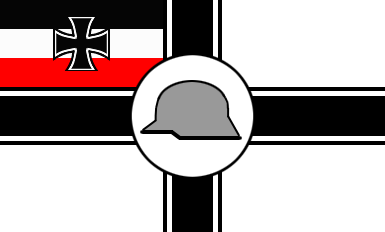
Steel Helmet Flag
|
The Steel Helmet 1918-1932
Der Stahlhelm
The Steel Helmets, or Association of Frontline Soldiers (Bund der Frontsoldaten), was founded in 1918 by war veteran Franz Seldte, his brothers and some other soldiers from his unit. The association was originally meant as both a mutual aid society for World War I veterans and as a political combat group like many other that sprung up during the 1920s. In 1926, it numbered half a million members, by far the largest at the time. Around this time the Steel Helmets entered politics, although unlike similar groups, it didn't endorse a single party preferring instead to present itself simply as Conservative. However, as time passed the Steel Helmets became more radical and authoritarian and eventually joined the NSDAP coalition that brought Hitler to power.
The militia arm of The Steel Helmets would eventually be absorbed into the SA.
|
Red Front Flag
|
League of Red Front Fighters (Red Front) Flag 1919-1933
Roter Frontkämpferbund (RFB)
The Communist paramilitary organization in the Weimar Republic was called the Roter Frontkämpferbund (RFB), or League of Red Front Fighters. This was the enforcement militia of the Communist Party of Germany (kommunistische partei deutschlands) or KPD active between 1919-1933. The standard Red Banner was in common use.
There were also various variants in use by local groups including a Red banner with a centered yellow fist. Addition lettering would sometimes be added such as city names, slogans, or initials (examples: RFB, Ortsgruppe, Rot Front, Roter Frontkämpfer Bund, or R.F.B. Ortsgruppe) in either yellow or white. There are also red banners with a red fist in a black circular field with a black ring around it, and text in black. There were also vehicle flags was a red triangular banner with a red fist in a black circular field. |
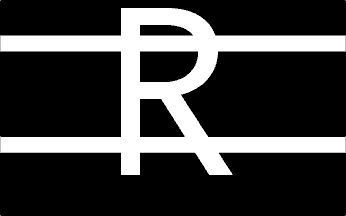
Freikorps Roßbach Flag
(Type #1)
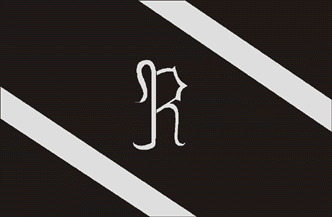
Freikorps Roßbach Flag
(Type #2)
|
Rossbach Free Corps Flag 1919-1923
Freikorps Roßbach
The Free Corps (Freikorps) were German volunteer military or anti-communist paramilitary units. Between World War I and World War II the term was used for all the paramilitary organizations that arose during the Weimar Republic to fight the Communist.
The FKR was named after Gerhard Rossbach (Roßbach), who organized the Rossbach Free Corps after World War I. He is generally credited with later inventing the brown colored uniforms of the Nazi Party after supplying surplus tropical khaki shirts to early troops of the SA (Sturmabteilung). During the Baltic fighting of 1919, his Freikorps made an extremely long march from Berlin across Eastern Europe to rescue the Iron Division (another Freikorps) from destruction by the Latvian Army. It went on to participate in the Kapp Putsch in 1920, get banned, and then reform under various front organizations. There money came from the Landbund, heavy industry, and supplying arms to other Free Corps.
In the early 1920s, Rossbach was arrested for trying to overthrow the government. Rossbach also joined the Nazi Party. He took part in the Beer Hall putsch of 1923, mobilizing students, cadets and officer candidates of the Reichswehr, and then fled to Austria after the putsch failed. |
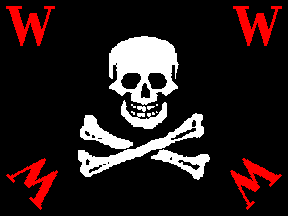
FreeCorps Flag
|
Werewolf Free Corps Flag 1919-1933
Freikorps Werwölfe
The Werwolf Freikorps (Werewolf Free Corps) was one of many small active paramilitary units that fought for control of the streets of Berlin and Munich during the politically turbulent Weimar era. In 1923, this veterans group which named itself Werwolfbund Deutscher Männer und Frontkrieger (Werewolf Organization of German Men and Front Line Soldiers) was formed as apparently part of the Heydebreck Freikorps. Initially formed during the Red Revolution of November 1918, Peter von Heydebreck, a German World War I veteran, founded this counter revolutionary Freikorps, which was apparently named after himself.
This fanatical right-wing predecessor of the future National Socialist brown shirts, or Sturmabteilung (SA/Storm Troopers), soon became involved in violent street fights and melees with Communists and other left-wing militias, such as the Red Front (League of Red Front Fighters).
|
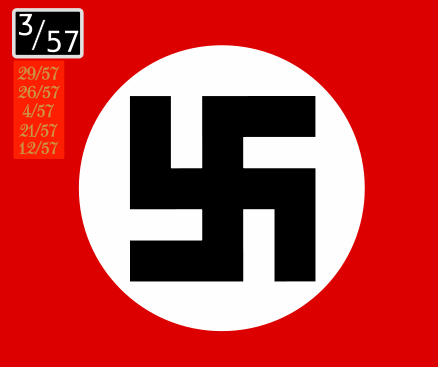
SA Flag c1929
|
NSDAP Assault Troops Flags 1929-1934
Sturmabteilung (SA)
The SA (popularly "Brown Shirts") was a paramilitary organization created to protect National Socialist German Workers Party (NSDAP) meetings and disrupt those of other parties. This is an early example (later flags had slanted swastikas) of the flags used by the battalions and companies of the SA "Assault Troops" (Sturmabteilung), or "Protection and Sport Division" Regiments. The small black, blue, green, or silver squares in the upper left hand corners contains the numerals which indicated battalions and companies (Roman numerals) and regiments (Arabic numerals).
These SA unit were originally the bodyguards of Adolf Hitler before he replaced them with his SS (Storm Troopers) bodyguards. The powerful SA leadership and most of Hitler's opposition were completely destroyed after the "Night of the Long Knives," or "Operation Hummingbird," a purge that took place in Nazi Germany between June 30 and July 2, 1934.
For more information - see SA (Sturmabteilung) Standards. |
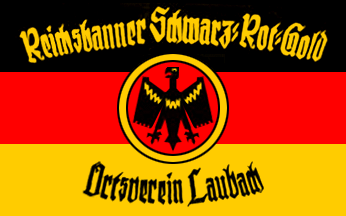
Reichsbanner Flag
(Laubach local chapter)
|
Imperial/Realm Banner Black-Red-Gold Flag 1924-1933
Reichsbanner Schwarz-Rot-Gold
One of the last political militias created in 1924, apparently as an attempt to counter some of the more radical groups that came before. The Reichsbanner was created by the cooperation of the Social-Democratic Party of Germany (Sozialdemokratische Partei Deutschlands), the German Centrist Party (Deutsche Zentrumspartei), and the German Democratic Party (Deutsche Demokratische Partei), in association with some trade unions.
It was meant as a self-protection group for political meetings, but saw itself also as defender of the republic against those who advocated an eventual change of regime. It also seems to have contained a large number of musical bands seen not only during parades, but also at public speeches. At its height in 1932, it numbered roughly 3 million members. It was eventuality disbanded in March 1933 at the same time as its political founding groups were declared illegal.
|
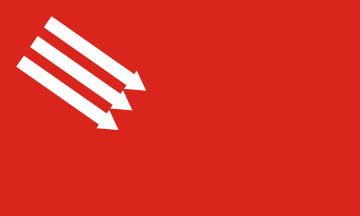
Iron Front Flag
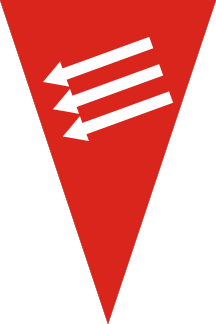
Iron Front Pennant
|
The Iron Front Flag 1931-1933
Eiserne Front
Iron Front was founded in 1931 by the Social Democratic Party of Germany (SPD), the labor unions, the Realm Banner Black-Red-Gold and workers´ sport clubs, as a united front for defending the democracy, mainly against the rapidly strengthening Nazis, but also against the monarchist nationalists and the Communists. Organized as a militia, it held mass demonstrations in support of the Weimar Republic, which frequently turned into street fighting against the Nazis or Communists. The Iron Front was banned in 1933.

Anti-Nazi Demonstration Flag 1932
The flag of Iron Front was red, charged with three large white arrows in the canton, pointing towards the bottom fly. There are two explanations of the arrows: they stood either for the enemies of the Republic (Nazis, monarchists and Communists), or for the Iron Front founders (the SPD, the labor unions, and the Realm Banner Black-Red-Gold). The emblem itself was created by Sergei Tschachotin, a German scientist of Russian origin and SPD activist. He designed it so it could easily cover a Nazi swastika, as seen on the flag used during an anti-Nazi demonstration in 1932. Frequent use of these arrows in propaganda by the SPD, often without referencing the Iron Front, has caused the flag to be directly associated with the party, although the SPD never officially adopted it.
|
| Top of Page | Return to German Pages |
|